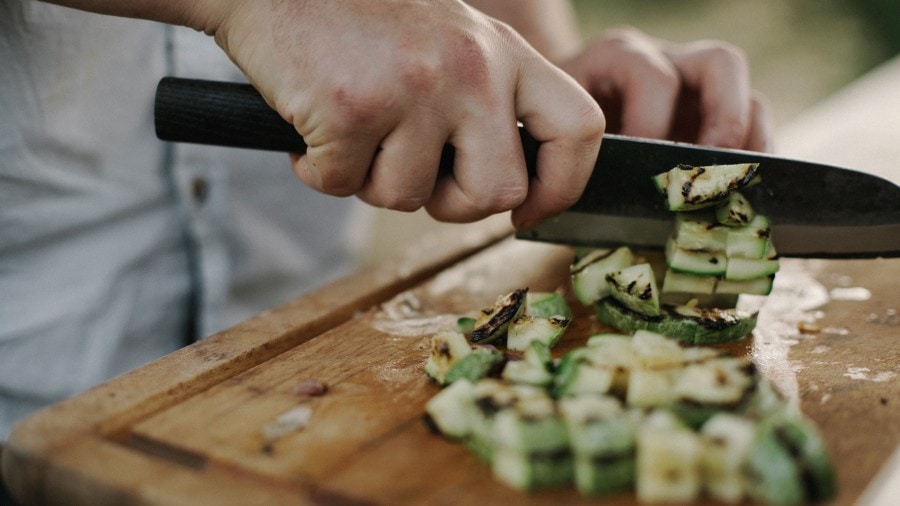The damascus knife sharpener stands as an essential tool for kitchen professionals who seek to maintain the integrity and sharpness of their culinary blades. Renowned for their intricate design and exceptional performance, Damascus knives are cherished by chefs worldwide. However, their performance relies heavily on regular maintenance and efficient sharpening. Understanding how to effectively sharpen a Damascus knife can make a significant difference in your kitchen's performance.

Understanding the Essence of Damascus Steel
Damascus steel is celebrated for its distinctive wavy pattern and superior resilience. Often composed of various steel types, it boasts not only aesthetic appeal but also remarkable durability. Its intricate layered pattern not only adds beauty but contributes to its renowned sharpness and flexibility, making the choice of the right sharpener crucial. To delve deeper into the history and characteristics of Damascus steel, visiting this informative article can provide valuable insights.
Why Choosing the Right Sharpener Matters
For those passionate about cooking, an impeccably sharpened knife is more than a toolit's an extension of skill and precision. Damascus knives, with their unique composition, require careful consideration when selecting a sharpener. Unlike standard blades, they need a sharpener that respects both the hardness and the unique pattern of the steel. An inappropriate sharpener can cause unwanted wear or even damage the beautiful pattern that sets a Damascus knife apart. Learn about the essentials of knife care for culinary students on our dedicated blog.
Features to Look for in a Damascus Knife Sharpener
- Precision and Control: An efficient sharpener offers precision and control, allowing you to maintain the knifes edge perfectly.
- Material Compatibility: Check that the sharpener is compatible with the Damascus steel composition to avoid unnecessary blade wear.
- Ease of Use: A user-friendly design is crucial, especially for kitchen professionals who require swift and seamless sharpening.
- Durability: Investing in a high-quality sharpener ensures its longevity and consistent performance over time.
To view some options suitable for enhancing your cooking toolset, review the detailed guide on kitchen knives.
Step-by-Step Guide to Using a Damascus Knife Sharpener
Proper technique is vital when using any knife sharpener, especially for high-end blades like Damascus knives. Here, we break down the process:
- Preparation: Start by cleaning your knife thoroughly to remove any residue.
- Select the Appropriate Angle: Generally, a 15-20 degree angle works well for most Damascus knives.
- Sharpening: Glide the knife smoothly along the sharpener, applying even pressure to ensure uniform sharpening.
- Test the Sharpness: After sharpening, test the blade on a piece of paper or a tomato to evaluate its sharpness. Adjust if necessary.
Implementing these steps ensures your kitchen blades are always at peak performance, ready for any culinary challenge.
The Professional Advantage
Investing in a high-quality Damascus knife sharpener doesn't just benefit your cooking; it represents a commitment to excellence. For kitchen professionals, having a sharp knife is synonymous with precision cutting, enhanced flavors, and impeccable presentation. Not only does it save time, but it also protects the integrity of the ingredients.
Our blog on premium knife brands further explores how the right tools make all the difference in a professional kitchen environment.

FAQs About Damascus Knife Sharpeners
What makes a Damascus knife different from other kitchen knives?
Damascus knives are composed of multiple layers of steel, providing unique patterns and unparalleled sharpness, making them a top choice for professional chefs.
Can regular sharpeners damage Damascus knives?
Yes, using an inappropriate sharpener may harm the blade patterns and reduce the knife's lifespan. It's crucial to use a sharpener specifically designed for Damascus knives.
How often should I sharpen my Damascus knife?
This depends on the frequency of use. For regular use, sharpening every few months is ideal to maintain its edge. Otherwise, once every six months is recommended.
To learn more about caring for your daily cooking tools, visit our article on daily cooking knives.
This article contains affiliate links. We may earn a commission at no extra cost to you.


























